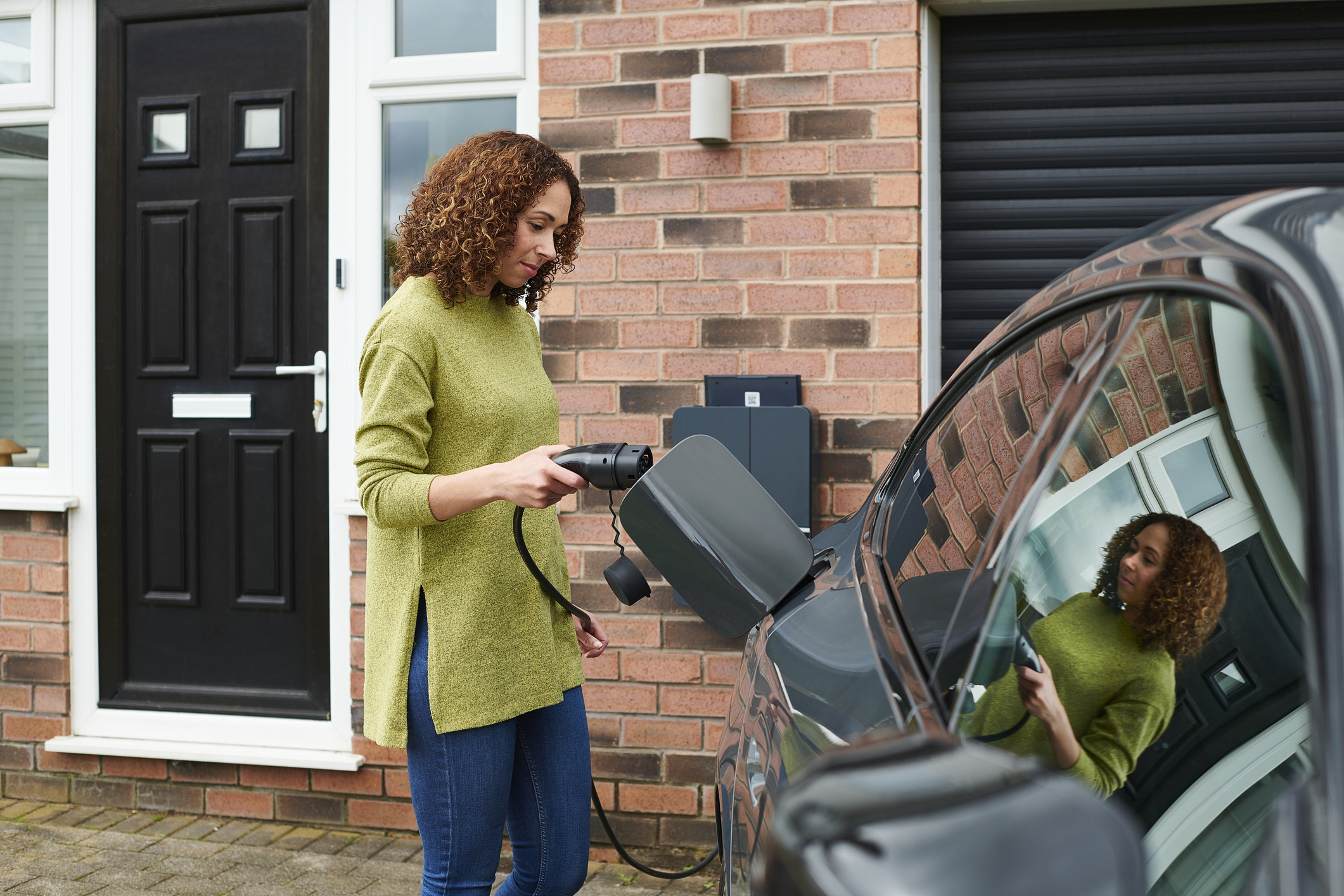Best EV energy tariffs for electric vehicle owners
As demand rises for electric cars, we look at the best EV tariffs being offered by energy suppliers and explore how efficient they are at lowering your overall household costs


Electric vehicles (EVs) are becoming increasingly popular with over 1.7 million on UK roads in October 2025, representing around 5% of the total, according to data from Zapmap.
Though cheaper than fueling a petrol or diesel vehicle, it still costs a fair amount of money to run your electric vehicle – especially after energy prices soared in 2022.
On average it costs around £40 to charge an electric vehicle from 10% to 80% (the highest recommended level for rapid charging) at a public charging point, according to data from RAC in May.
MoneyWeek
Subscribe to MoneyWeek today and get your first six magazine issues absolutely FREE

Sign up to Money Morning
Don't miss the latest investment and personal finances news, market analysis, plus money-saving tips with our free twice-daily newsletter
Don't miss the latest investment and personal finances news, market analysis, plus money-saving tips with our free twice-daily newsletter
However, you can significantly lower the cost of ‘filling up’ your electric vehicle by charging at home, which will cost an average of around £17 from 0% to 100%.
This can be brought even further down by utilising one of the top EV energy tariffs on the market, which lets you charge your car for less than a traditional household energy tariff.
With more people making the switch from petrol and diesel to electric cars, it is worth understanding how EV tariffs work, what they offer, and whether they are worth getting.
What are EV tariffs?
EV tariffs are energy tariffs for households that have electric vehicles. They typically offer a discounted rate during off-peak hours specifically for charging your electric vehicle.
The discounted rates during off-peak hours mean EV drivers can make a significant saving by charging their car during this time, as they are able to pay much lower unit rates.
The options currently available on the market work in a similar way to Economy 7 and time-of-use (TOU) tariffs.
While EV tariffs are aimed at electric vehicle owners, the cheaper unit rates tend to apply to all electricity usage during off-peak hours. This means you can save money on household activities like running a washing machine or dishwasher, depending on when you run the appliances.
Variable EV tariffs offering a dual-rate are covered by the Ofgem energy price cap, meaning that when the price cap rises or falls, so does your EV tariff. Fixed tariffs are also available, allowing drivers to lock in a specified unit rate for a set period of time.
Suppliers have to come in below a weighted average unit rate that considers typical day and night usage for households. The exact rate varies by region. You can contact your energy supplier to find out what your rates would be.
Am I eligible for an EV tariff?
To qualify for an EV tariff, you need to own an EV charger and have a smart meter fitted. This is so your energy supplier can accurately measure how much energy you use – and when you use it.
Some suppliers also require you to be an existing customer. If you aren’t already with that provider, you may have to switch to one of their other tariffs before switching across to their EV-specific deal.
You’ll likely need to provide proof of owning an electric vehicle. Some suppliers have restrictions on the makes and models they supply, so it’s worth checking whether the vehicle you have or want to buy is included. For example, Ovo Energy has a full list of EVs it will supply energy for. Your provider may also only support certain types or brands of chargers.
Another key thing to check when signing up for this kind of tariff is whether it’s single or dual fuel. Some suppliers offer electricity-only products, meaning if you have gas, you will need to get a separate tariff for it.
Is it worth getting an EV tariff?
You can potentially save hundreds of pounds a year with an EV tariff compared to if you charge your EV using a standard tariff.
Exactly how much you can save will depend on the type of vehicle you own, your usage, driving distances and how much of your general energy consumption you can shift to off-peak times.
Introducing an EV into your household will naturally increase your energy consumption, potentially by as much as 50%.
However, as the cost of refueling an EV is typically significantly lower than of refueling a petrol or diesel vehicle, you will likely be paying less overall.
As long as you’re doing the bulk of your charging at home and this is taking place outside of peak hours, an EV tariff is likely to be a good bet to keep your bills down. You can get an estimate by using British Gas’s EV tariff savings calculator.
The government also offers an EV chargepoint grant of £350 (or 75% off the cost of getting a socket, whichever is lower) to help with EV socket installation costs at your property. You can also apply for one if you’re a landlord.
Which energy suppliers have the best EV tariffs?
A list of the EV energy tariffs with the lowest off-peak unit rates can be found below:
Supplier and tariff name | Off-peak unit rate (per kWh) | Off-peak hours | Notes |
|---|---|---|---|
E.on Next Next Drive Smart v5.2 | 6.5p/kWh | 12am to 6am | Existing customers only Fixed, dual-fuel or electricity-only tariff |
Good Energy EV Charge | 6.6p/kWh | 12am to 5am | Fixed, electricity-only |
Scottish Power EV Saver | 7.2p/kWh | 12am to 5am | Variable, dual-fuel & electricity-only |
E.on Next Next Drive v11 | 7.5p/kWh | 12am to 6am | Fixed, dual-fuel or electricity-only tariff |
British Gas EV Power v2 | 7.9p/kWh | 12am to 5am | Fixed, electricity-only tariff |
Prices correct as of 5 November
How to save money with an EV tariff
Here are a few ways to maximise your savings with an EV tariff:
- Optimise your EV charging: If you have a smart charger, take advantage of off-peak times by powering up your vehicle when costs are at their lowest. You’ll be able to manage your battery’s charge level and set a minimum threshold to prevent your EV from running low.
- Use your energy-hungry appliances at night: Whether it’s dishwashing duties or laundry day, it’s worth rethinking your appliance schedule. EV tariffs allow you to use any electricity at a discounted price in off-peak hours, so you can save on your energy bills by using energy-hungry appliances at a cheaper time.
- Watch out for daylight savings: Clock adjustments could alter your off-peak windows by an hour. Make sure to stay on top of these changes by checking with your energy supplier.
- Drive your EV efficiently: By adopting economical driving habits like smooth acceleration and braking, sticking to speed limits and not overusing your heating or air con, you could reduce your overall charging needs and keep your costs down.
Get the latest financial news, insights and expert analysis from our award-winning MoneyWeek team, to help you understand what really matters when it comes to your finances.

Oojal has a background in consumer journalism and is interested in helping people make the most of their money.
Oojal has an MA in international journalism from Cardiff University, and before joining MoneyWeek, she worked for Look After My Bills, a personal finance website, where she covered guides on household bills and money-saving deals.
Her bylines can be found on Newsquest, Voice.Cymru, DIVA and Sony Music, and she has explored subjects ranging from politics and LGBTQIA+ issues to food and entertainment.
Outside of work, Oojal enjoys travelling, going to the movies and learning Spanish with a little green owl.
- Ruth EmeryContributing editor
- Daniel Hilton
-
 Metals and AI power emerging markets
Metals and AI power emerging marketsThis year’s big emerging market winners have tended to offer exposure to one of 2025’s two winning trends – AI-focused tech and the global metals rally
-
 8 of the best houses for sale with beautiful fireplaces
8 of the best houses for sale with beautiful fireplacesThe best houses for sale with beautiful fireplaces – from a 15th-century cottage in Kent to a 17th-century palazzo in Oxfordshire